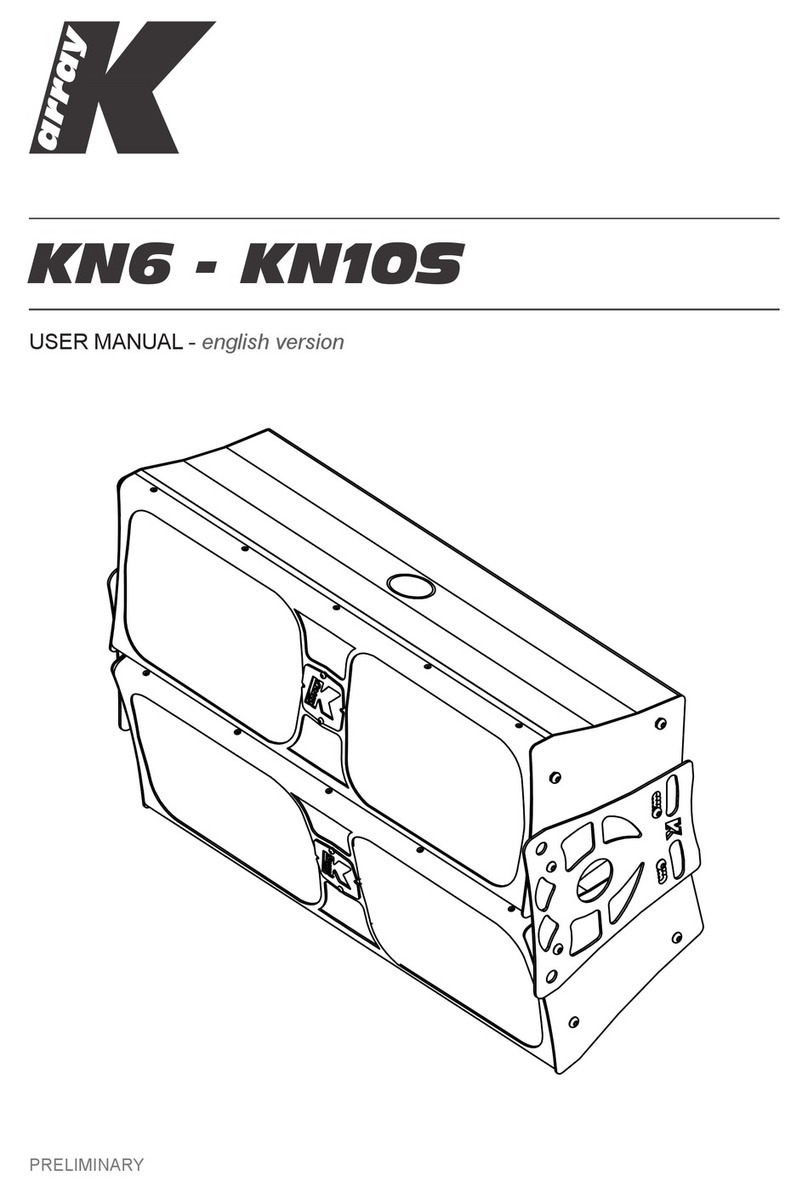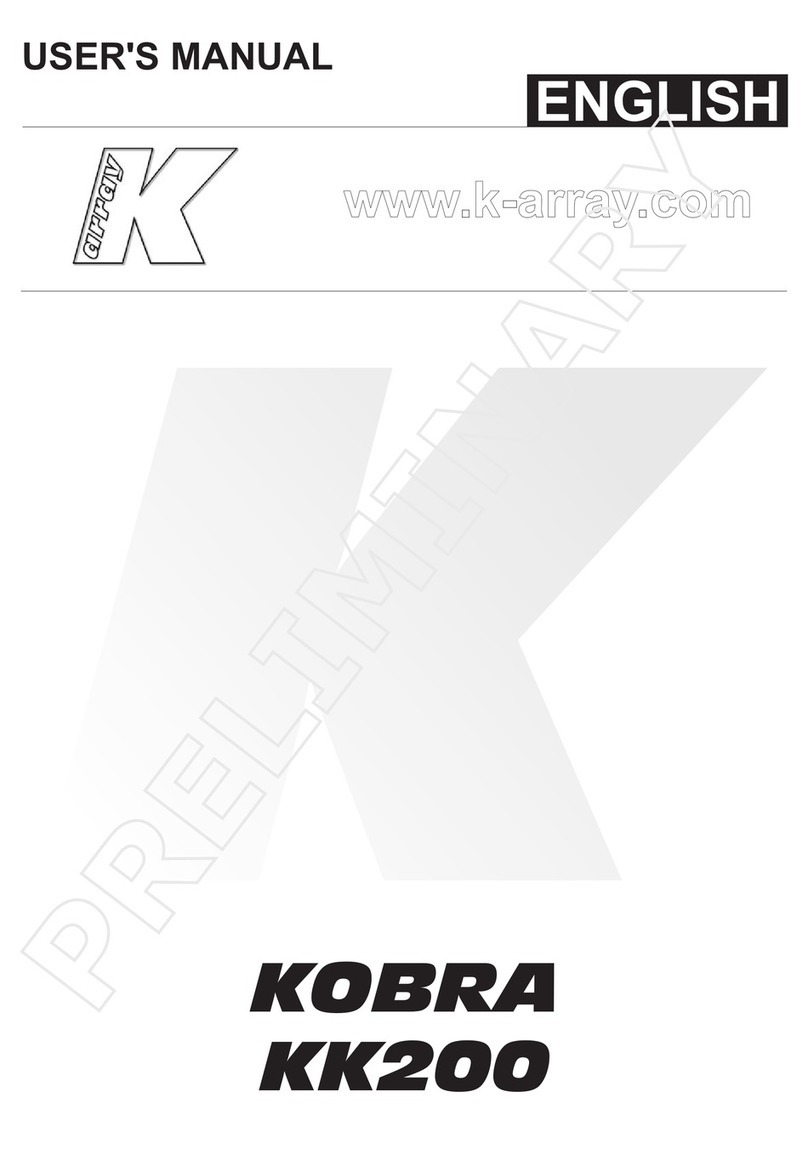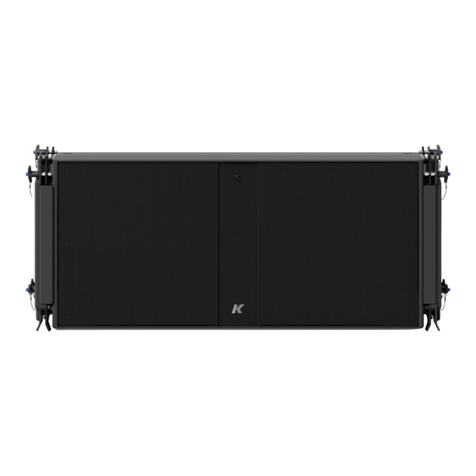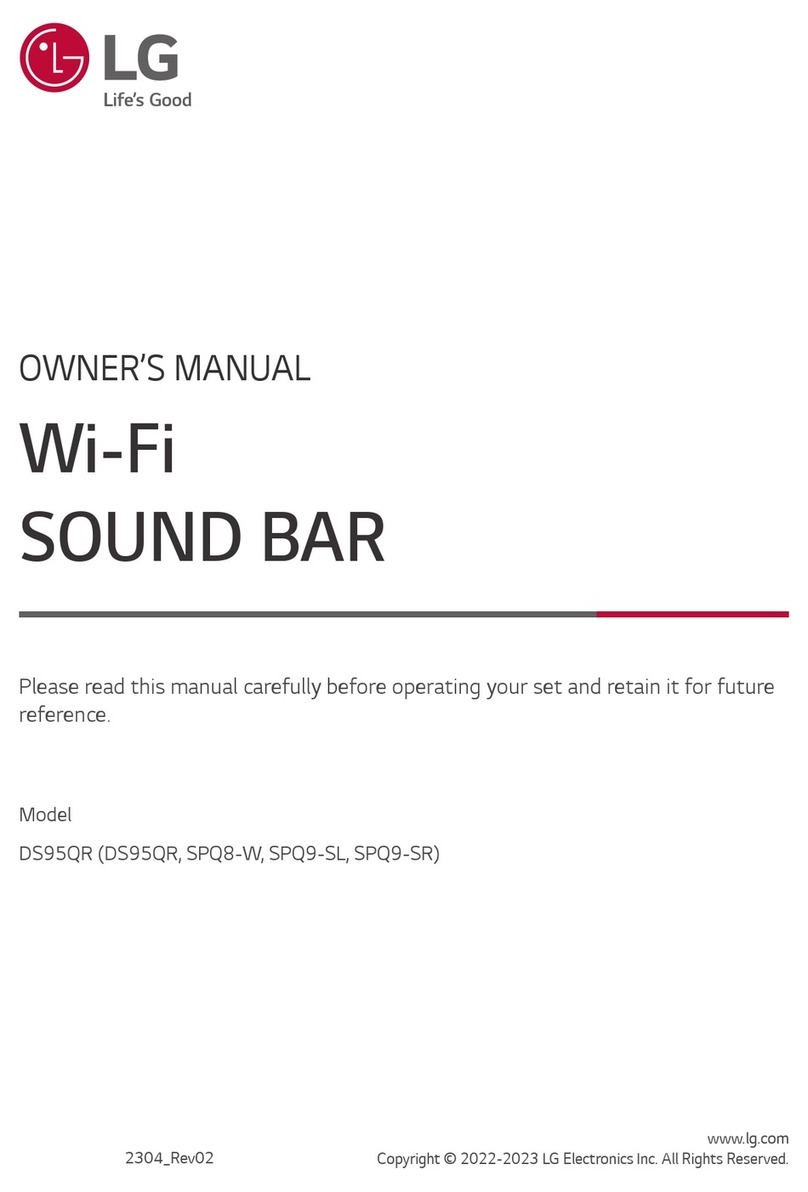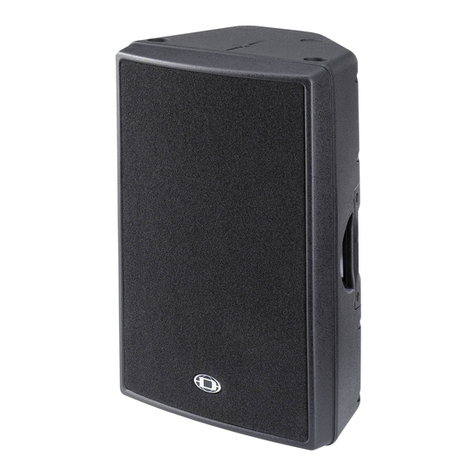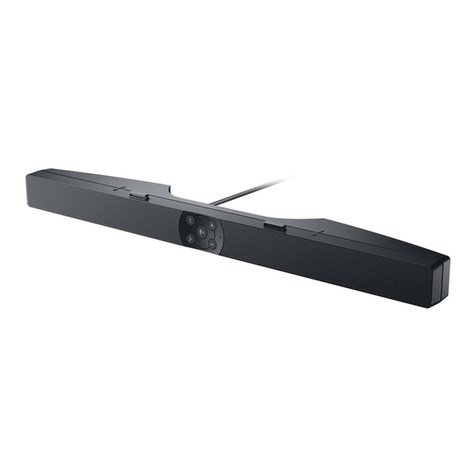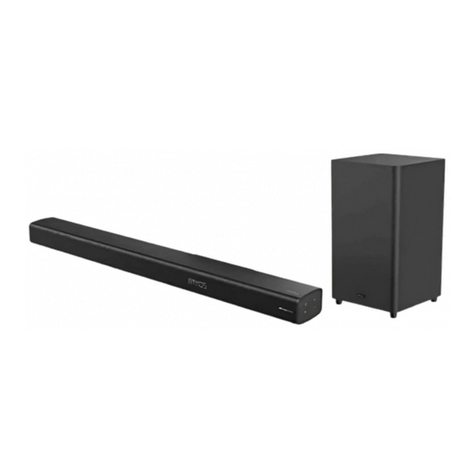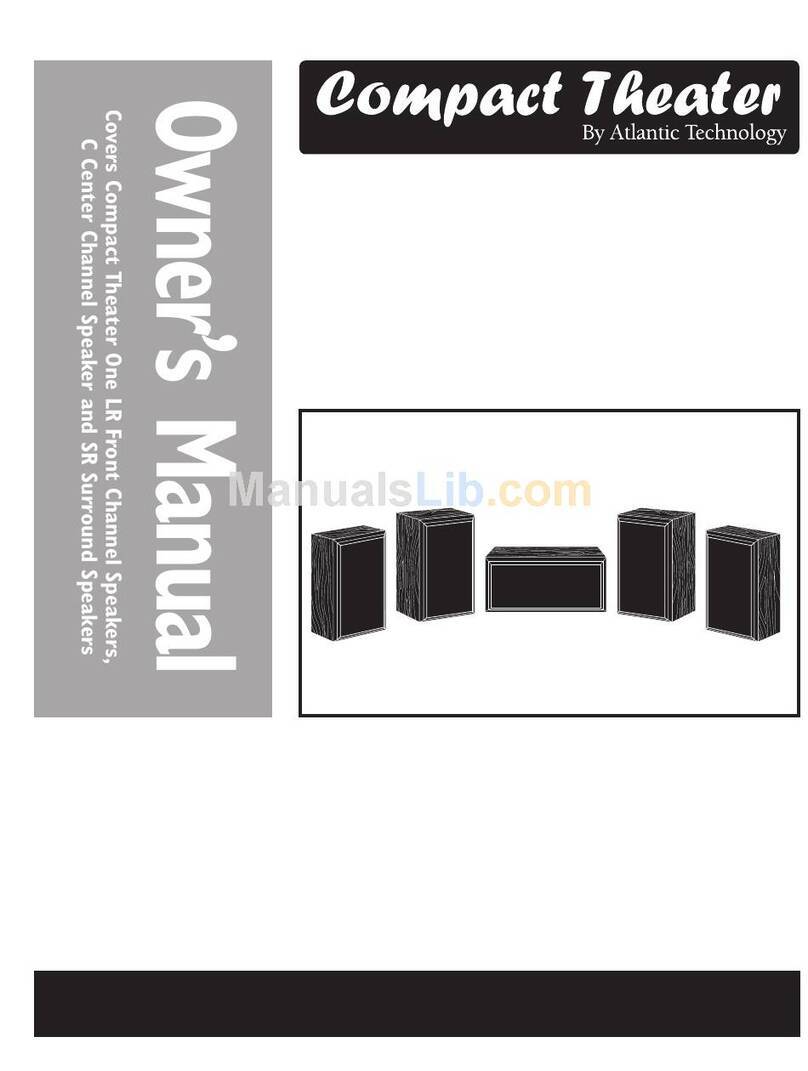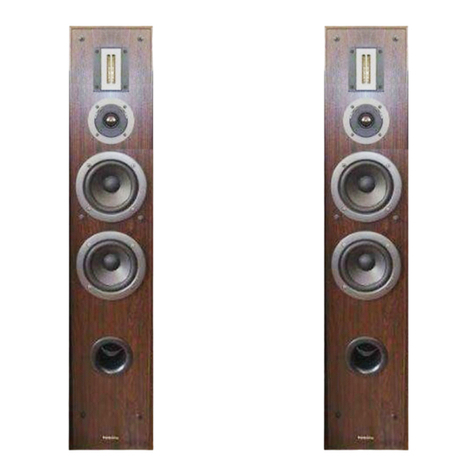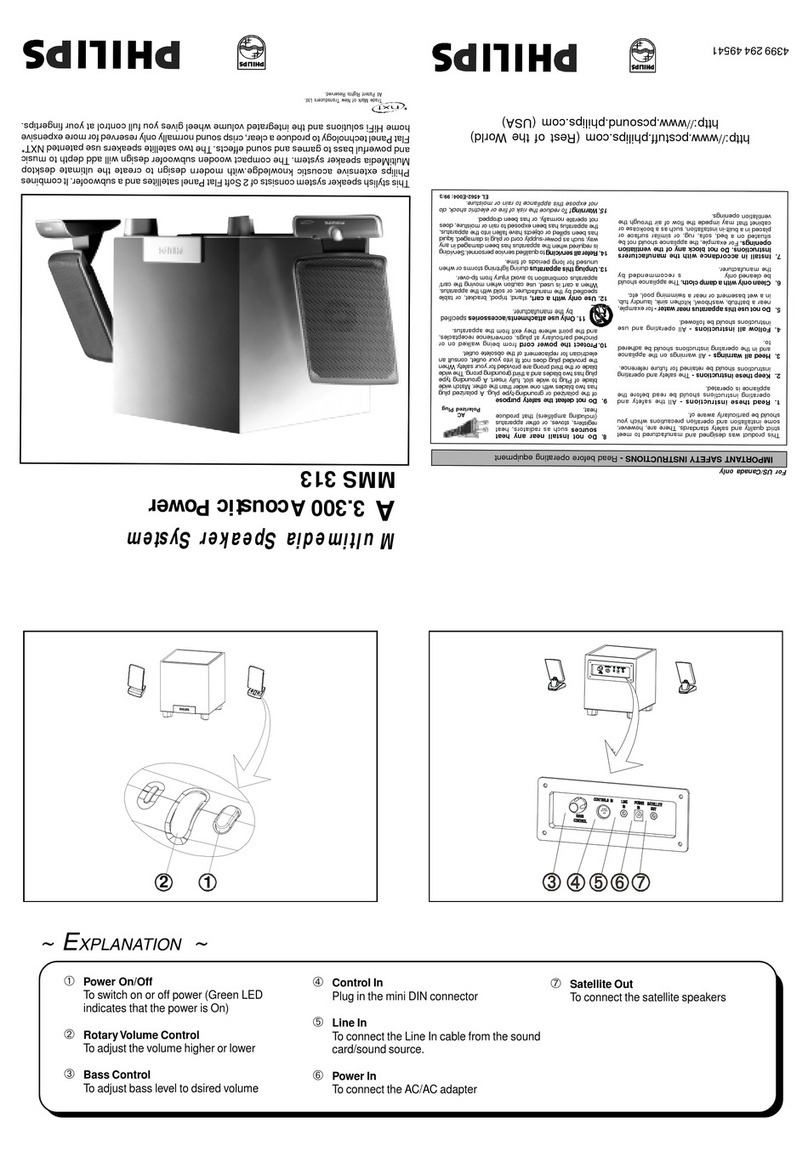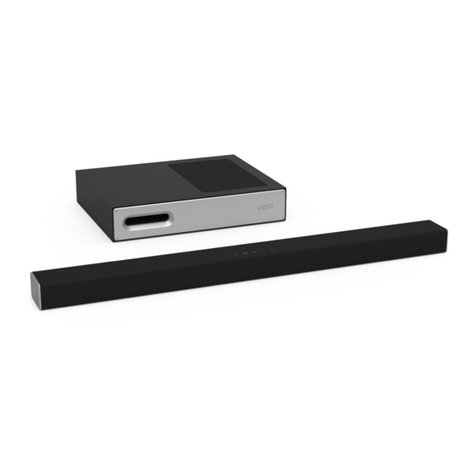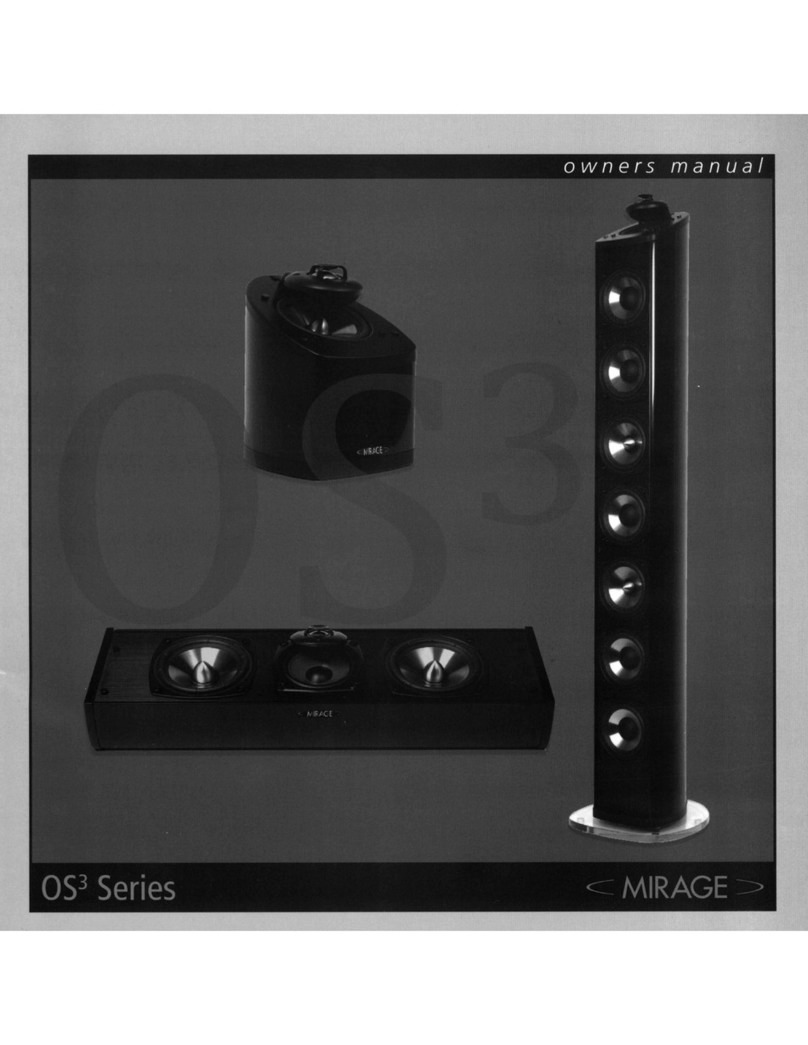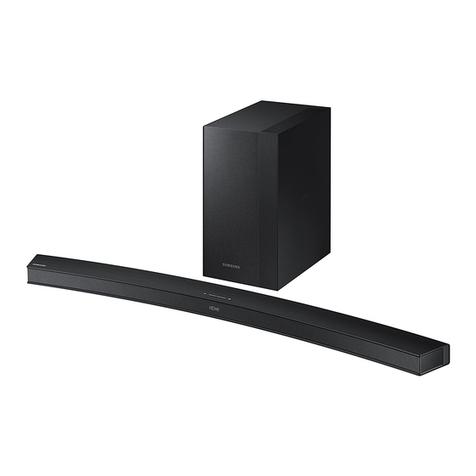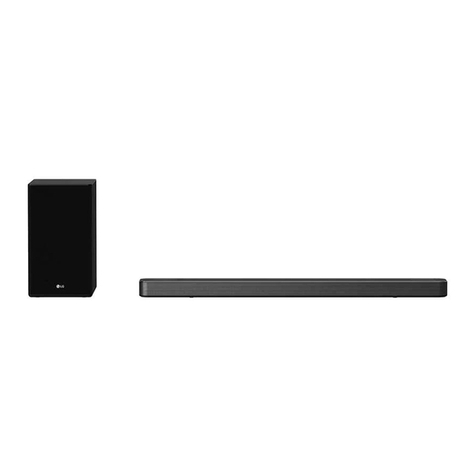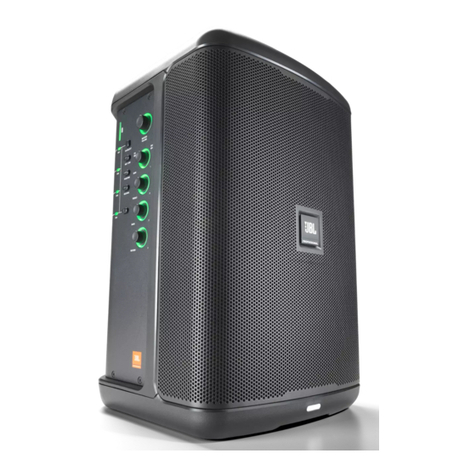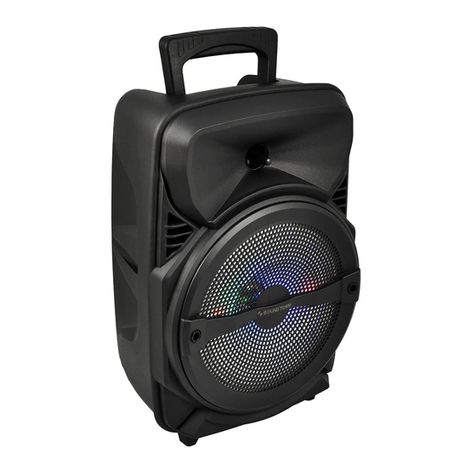K-array Ko40 User manual

REV. B
KO70
USER’S MANUAL
English

KO70
REV. B
2
CONTENTS
SYMBOLS 3
1. INTRODUCTION 4
2. APPLICATIONS 4
3. KEY FEATURES 4
4. UNPACKING 4
5. SAFETY 4
Safety and handling information 4
6. PHYSICAL 7
7. AMPLIFIER 8
7.1 AC POWER CONNECTOR 8
7.2 VOLTAGE REQUIREMENT 8
7.3 CURRENT REQUIREMENT 8
7.4 REAR PANEL 9
7.5 DSP CONTROL & REMOTE CONTROL 10
7.6 CLONER FUNCTION 10
7.7 KO70 PRESETS 11
7.8 AUDIO INPUT CONNECTOR WIRING 12
7.9 AMPLIFICATION AND PROTECTION CIRCUITRY 12
8. CONFIGURATIONS 12
9. SERVICE 12
10. SPECIFICATIONS 13
11. DECLARATION OF CONFORMITY 14

KO70
REV. B
3
This symbol alerts the user to the presence of recommendations about product’s use and
maintenance.
This symbol alerts the user to the presence of recommendations about the product’s use
and maintenance.
K-array declares that this device is in compliance with applicable CE standards and
regulations. Before putting the device into operation, please observe the respective
country-specic regulations!
WEEE
Please dispose of this product at the end of its operational lifetime by bringing it to your local
collection point or recycling center for such equipment.
This device complies with Restriction of Hazardous Substances Directive.
SYMBOLS
Warning! Dangerous voltages: RISK of electric shock.
Terminals marked with this symbol are HAZARDOUS LIVE and the external wiring connected
to these terminals requires installation by an instructed person or the use of ready-made
leads or cords.

KO70
REV. B
4
1. INTRODUCTION
The K-array Ko40 and Ko70 are self-powered, Sub Bass speaker systems. They are best suited for high-power
extended bass response applications in arenas, theatres, concert halls, churches, and outdoor events. The 21”
speakers employ neodymium magnets and 6” voice coils driven by powerful D-class ampliers. The large ports
are designed toa be fully symmetrical to the speakers, which means the back loading on the drivers is consistent
and even with no port air turbulence. The triangle port construction also provides excellent structural integrity and
strength, effectively eliminating any box resonance.
2. APPLICATIONS
• Large scale events
• Touring sound reinforcement
• Stadiums, arenas, concert halls, theatres
• Installations in low-load capacity situations
3. KEY FEATURES
• Unique performance-to-size ratio
• Self powered Integrated DSP and remote control
• Variable vertical coverage
• Wide horizontal coverage
• Integrated ying and stacking hardware
• Top quality components for outstanding
performance
• Ultra-fast set-up and dismantling system
4. UNPACKING
Each K-array loudspeaker is built to the highest standard and thoroughly inspected before leaving the factory.
Upon arrival, carefully inspect the shipping carton, then examine and test your new loudspeaker. If you nd any
damage, immediately notify the shipping company. Only the consignee may institute a claim procedure regarding
the system’s electronic equipment.
5. SAFETY
WARNING
Read all safety information below and operating instructions before using this device to avoid injury.
Warning. Failure to follow these safety instructions could result in re, shock or other injury or
damage to the device or other property.
Safety and handling information

KO70
REV. B
5
It is important that loudspeaker systems are used in a safe manner.
Avoiding Hearing Damage. Professional loudspeakers are capable of producing extremely high sound
levels and should be used carefully. Never stand close to loudspeakers driven at high volume. Set the
volume to a safe level. You can adapt over time to a higher volume of sound that may sound normal but
can be damaging to your hearing. Hearing loss get worse every time you’re exposed to a sound level of 90
dB or over for an extended period of time. If you experience ringing in your ears or mufed speech, stop
listening and have your hearing checked. The louder the volume, the less time is required before your
hearing could be affected.
Choking Hazards. This device contains small parts, which may present a choking hazard to small children. Keep
the device and its accessories away from small children.
Avoiding Water and Wet Locations. Do not install the system in wet or humid locations without using weather
protection. Take care not to spill any food or liquid on the device. In case it gets wet, unplug all cables, turn off the
device before cleaning, and allow it to dry thoroughly before turning it on again. Do not attempt to dry the device with
an external heat source, such as a microwave oven or hair dryer. A device that has been damaged as a result of
exposure to liquids could be not serviceable. If the device is exposed to rain or excess moisture, unplug the power
cord immediately.
Keeping the Outside Clean. Handle the device with care to maintain its appearance. To clean it, unplug all cables
and turn off it. Warning: unplugging the power cord is the only way to disconnect power completely. Then use a
soft, dry or slightly damp cloth. Avoid getting moisture in openings. Don’t use window cleaners, household cleaners,
aerosol sprays, solvents, alcohol, ammonia, or abrasives to clean the device.
Carrying, Handling and Installing the device. The device contains sensitive components. Do not drop,
disassemble, open, crush, bend, deform, puncture, shred, microwave, incinerate, paint, or insert foreign objects
into it. If your device has been dropped or damaged, or if liquid has been spilled into the chassis, unplug the power
cord immediately.
Do not operate speakers for an extended period of time with sound distortion. This is an indication of malfunction,
which in turn can generate heat and result in a re.
To reduce the risk of overheating the device, avoid exposing it to direct sunlight and take care to do not install it near
heat emitting appliances, such as a room heater or stove.
No naked ame sources such as lighted candles should be placed near the device.
Operate the device in a place where the temperature is between -20°C and 50°C (-4°F to 122° F). Avoid dramatic
changes in temperature or humidity when using it, as condensation may form on or within the device.
During the use, it is normal for the device to get warm. The exterior of the device functions as a cooling surface that
transfers heat from inside the unit to the cooler air outside.
The device should be placed so that its location does not interfere with its proper cooling. For example, the device
shouldn’t be placed on beds, carpets or similar surfaces that could create an obstacle for the ventilation openings.
To reduce the risk of electric shock, unplug the power cord before connecting audio cables.
Set up your device on a stable retaining horizontal surface. If combined or mechanically connected with other
products, always verify the stability of the resulted system. Install the unit only in a location that can structurally
support the weight of the unit, far away from people who can interfere with the stability of the system. In case of
outdoor installation, assure that the wind does not interfere with the system’s stability, taking extra securities like
chains, weights, ropes or any other certied anchoring systems. Doing otherwise may result in the unit falling down,
causing personal injury or property damage. The system should only be suspended by qualied personnel following
safe rigging practices. Secure xings to the building structure are vital. To clarify any doubt you may have, seek help
from architects, structural engineers or other specialists.
Protect the power cord from being walked on or pinched.

KO70
REV. B
6
This audio system is not intended for use in the operation of nuclear facilities, aircraft navigation or communication
systems, air trafc control systems,or for any other uses where the failure of the audio system could lead to death,
personal injury, or sever environmental damage.
Do not make repairs yourself. Caution, risk of electric shock. Do not open the device, it contains potentially
hazardous voltage. Never attempt to disassemble, repair or modify the system yourself. Disassembling the unit
may cause damage that is not covered under the warranty. The device contains no user-serviceable parts. Repairs
should only be performed by factory trained service personnel. Do not plug the power cord if you suspect that your
device needs service or repair.
Voltage requirement. Make sure that the supplied voltage stays within the specied range. Verify that your mains
connection satises the power ratings of the device.
Only connect the power supply to an appropriate power outlet.
Warning: since the device is a CLASS I apparatus, it must be only connected to an AC three-wire grounding outlet.
If your outlet isn’t grounded, contact a licensed electrician to replace it with a property grounded outlet.

KO70
REV. B
7
85 cm
115 cm
60 cm
33.46”
45.27”
23.62”
weight: 78 kg (171,96 lbs)

KO70
REV. B
8
7. AMPLIFIER
7.1 AC POWER CONNECTOR
7.2 VOLTAGE REQUIREMENT
7.3 CURRENT REQUIREMENT
The amplier module and any audio equipment connected to it (mixing consoles, processors, etc.) must be
properly connected to the AC power distribution, preserving AC line polarity. All grounding points should be
connected to a single node or common point, using the same cable gauge as the neutral and line cables. Bad
grounding connections within an audio system can produce noise, hum and/or serious damage to the input/
output stages in the system’s electronic equipment.
Before applying AC to any K-array self-powered speaker, be sure that the voltage
potential difference between neutral and earth ground is less than 5 VAC.
The KO70’s switching power supply accommodates AC mains operating at either 115V or 230V.
The amplier will continue to operate safely, without interruption, provided the AC voltage remains
within 85 - 270V, at 50 or 60 Hz. Please verify that your AC mains connection is capable of satisfy-
ing the power ratings for the device.
CAUTION
Do not connect the system to AC power mains exceeding 270V. Doing so will
cause signicant damage to the device and create serious risk for users!
The KO70 present a dynamic load to the AC mains, drawing additional current as operating levels increase.
Different cables and circuit breakers heat up at varying rates, so it is essential to understand current ratings
and how they correspond to circuit breaker and cable specications. Maximum continuous RMS current -
measured over a period of at least ten seconds - is used to calculate the temperature increase in cables,
which drives the proper size and gauge cable and rating for slow-reacting thermal breakers. Maximum burst
RMS current - measured over a period of approximately one second - is used to select the rating for fast
reacting magnetic breakers.

KO70
REV. B
9
For best performance, voltage drops should not exceed 10% at 115V or 5% at 230V. The minimum electrical
service amperage required by a K-array loudspeakers system is the sum of their maximum continuous RMS
current. We recommend allowing an additional 30% above the minimum amperage to prevent peak voltage
drops at the service entry.
900VA(>10 sec) - 3500VA (<1 sec)
KO40 max continuous apparent power (VA)
AC
INPUT
AC - IN
115 - 230 V
I nom.
7.8 A / 115 V - 3.9 A / 230 V
AC
LINK
MAX OUT
115 V / 0.7 KW / 5 A
230 V / 1.8 KW / 10 A
7.4 REAR PANEL
345678
910
11 12
1) Address selector, (rotary x10 - x1)
2) Preset selector (Press one to change, keep 10 sec.
to store)
3) ID number for remote control
4) Preset in use
5) RS485 connections for remote control (don-t connect
to LAN port)
6) Input PAD level
7) Ground lift switch
8) Balanced XLR IN/OUT parallel
9) PowerCon Input
10) PowerCon parallel Output (max 5A @110V)
11) Power switch

KO70
REV. B
10
7.5 DSP CONTROL & REMOTE CONTROL
The KO70 have a powerful DSP that manages all the functions of the speakers. Each system can store on
board16 preset that can be recalled pushing the PRESET button. Once the preset will appear on the lower
line of the display it will become automatically available after few seconds. If you desire to set a preset as
“default” you just need, once selected it, to keep pressed for ve seconds the PRESET button. After that,
this preset will automatically be recall each time you will switch on your module. It is also possible to remote
each module by an RS485 serial port. In order to remote your system, you need to set each module on a
different address, so that, in your chain, no one module will have the same address. Two rotary encoder al-
low you to set the desired address number that will appear on the top line of the display. Using the remote
control software it is possible to mute each system, select a desired preset loaded on-board or download a
new preset pack.
AC
INPUT
AC - IN
115 - 230 V
I nom.
7.8 A / 115 V - 3.9 A / 230 V
AC
LINK
MAX OUT
115 V / 0.7 KW / 5 A
230 V / 1.8 KW / 10 A
PRESET LOADED
IP ADDRESS X10/ X1
PRESET SCROLL
RS485 PARALLEL CONNECTIONS
7.6 CLONER FUNCTION
It is possible to clone the entire presets bank from Speaker to Speaker without any PC connected. We
will call SpeakerA the one with the presets bank that you want clone, and SpeakerB the one that will be
upgraded.
Set the SpeakerA on ID 99, will appear CLONER on the display
Keep SpeakerB on any ID number between 10 and 90.
Turn off both the speakers and connect by a RJ45 8 poles cable
Turn on the SpeakerB and after the SpeakerA
SpeakerA will start to clone, on the display will appear a cont down (00/15, 01/15, etc)
Wait till 20 seconds after 15/15
Change the ID of the SpeakerA to any other ID and turn off both Speakers
Turning on the SpeakerA check that it is on mode 16x16 and NOT 4x4.
If SpeakerA is in mode 4x4, just turn off the speaker and keep press the Preset button during the turning on
The preset are cloned to the SpeakerB

KO70
REV. B
11
7.7 KO70 PRESETS

KO70
REV. B
12
7.8 AUDIO INPUT CONNECTOR WIRING
The Audio section includes parallel LINK, which
allows users to distribute an audio signal to
multiple units. Up to 30 different modules can be
connected in parallel on the same balanced line
(with a source output impedance of 600 ohm).
CH 1 Line Input (female, balanced XLR) is
wired in parallel to CH1 Line Parallel Out (male,
balanced XLR). To create your own audio cables,
please use the following wiring diagrams:
hot
XLR connector
grd
cold
hot
grd
cold
21
3
2
1
3
INPUT PARALLEL
OUTPUT
The KO40 is powered by the K-array digital power amplier with a total power of 3000 watts.
All the specic functions for the KO40 such as crossovers, frequency, phase response, and loudspeakers
protection are determined by a DSP processor installed inside the amplier.
All K-array speakers are shipped with the cone drivers in correct alignment. However, if a loudspeaker needs
to be replaced, make sure the replacement is reinstalled with the correct polarity. Incorrect cone driver polarity
impairs the system performance and may damage the component.
7.9 AMPLIFICATION AND PROTECTION CIRCUITRY
8. CONFIGURATIONS
If the device is not used as a stand-alone, K-array suggests some typical congurations which can be found in the
Redline System Matrix manual. The manual packs of the portable Redline systems are included and available to
download on the document download page on the ofcial K-array website. Redline systems insure a correct setup,
and tested stability.
9. SERVICE
To obtain service:
1) Contact the official K-array distributor in your country. Your local distributor will direct you to the appropriate service center.
2) If you are calling for ser vice, please have the serial number(s) of the unit(s) available for reference. Ask for Customer Service,
and be prepared to describe the problem clearly and completely.
3) If the problem cannot be resolved over the phone, you may be required to send the unit in for service. In this instance, you will
be provided with an RA (Return Authorization) number which should be included on all shipping documents and correspondence
regarding the repair. Shipping charges are the responsibility of the purchaser.
Any attempt to modify or replace components of the device will invalidate your warranty. Service must be performed by an
authorized K-array service center.
Cleaning:
Use only a soft, dry cloth to clean the housing. Do not use any solvents, chemicals, or cleaning solutions
containing alcohol, ammonia, or abrasives. Do not use any sprays near the product or allow liquids to spill
into any openings.

KO70
REV. B
13
Notes for data
1. Maximum RMS applicable power for a musical signal, the reference signal is the one proposed by EIAJ
standard.
2. Measured @4 mt then scaled @1 mt
3. Amplifier wattage rating is based on the maximum unclipped burst sine wave RMS voltage that the
amplifier will produce into the nominal load impedance.
New materials and design are introduced into existing products without previous notice. Present systems
may differ in some respects from those presented in this brochure.
10. SPECIFICATIONS
Acoustics
Speakers power
handling 3000 w(EAS)
Maximum power 8000 w 1
Impedance 2 X 8Ω
Frequency range 20 Hz - 150 Hz +/- 3dB (preset dependent)
SPL 1W/1mt 99.5 dB 2
Maximum SPL 136 dB continuos - 140 dB peak
Coverage
Omni
Crossover
Type DSP controlled
Frequency 150 Hz maximum (preset dependent)
Transducers
2 x 21” Neodymium speakers with 6”
voice coil
Audio Input
Analog
Connectors
2 male + 2 female 3-pin balanced XLR
Remote control Input
Connectors 2 x female 8 poles RJ45
Power Input
Connectors 2 x PowerCon IN/OUT
Amplifiers
Type 2 modules class D - DSP controlled
Power 3500 watts x 2 channels on 8 ohm (7000
watt total 3 @8Ω
Protection Dynamic limiter, over current, over temp,
short circuits
AC power
Operating range 115 V - 230 V, 50/60 Hz (85V – 270 V)
(Auto Switch)
Max continuos
and
burst current
Standard 16A(>10 sec) - 32A (<1 sec)
Physical
Dimensions 115.0 x 60.0 x 85.0 cm
(45.27” x 23.62” x 33.46”)
Weight 78.0 kg (171.96 lbs)
KO70

KO70
REV. B
14
11. DECLARATION OF CONFORMITY

K-array s.r.l. unipersonale
Via Paolina Romagnoli - 50037
San Piero a Sieve (Firenze) - Italy
tel. +39 055 8487222 - fax. +39 0558487238
e-mail: info@k-array.com
www.k-array.com
UMCO70AA01ENB
This manual suits for next models
1
Table of contents
Other K-array Speakers System manuals
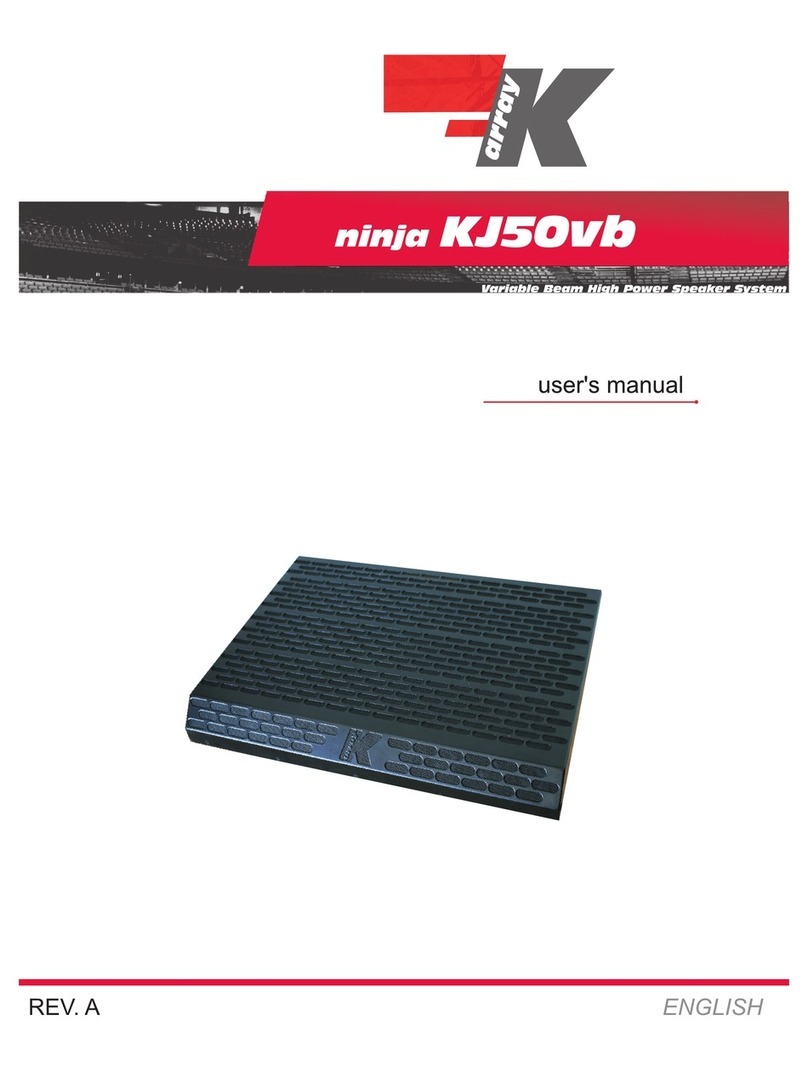
K-array
K-array ninja kj50vb User manual
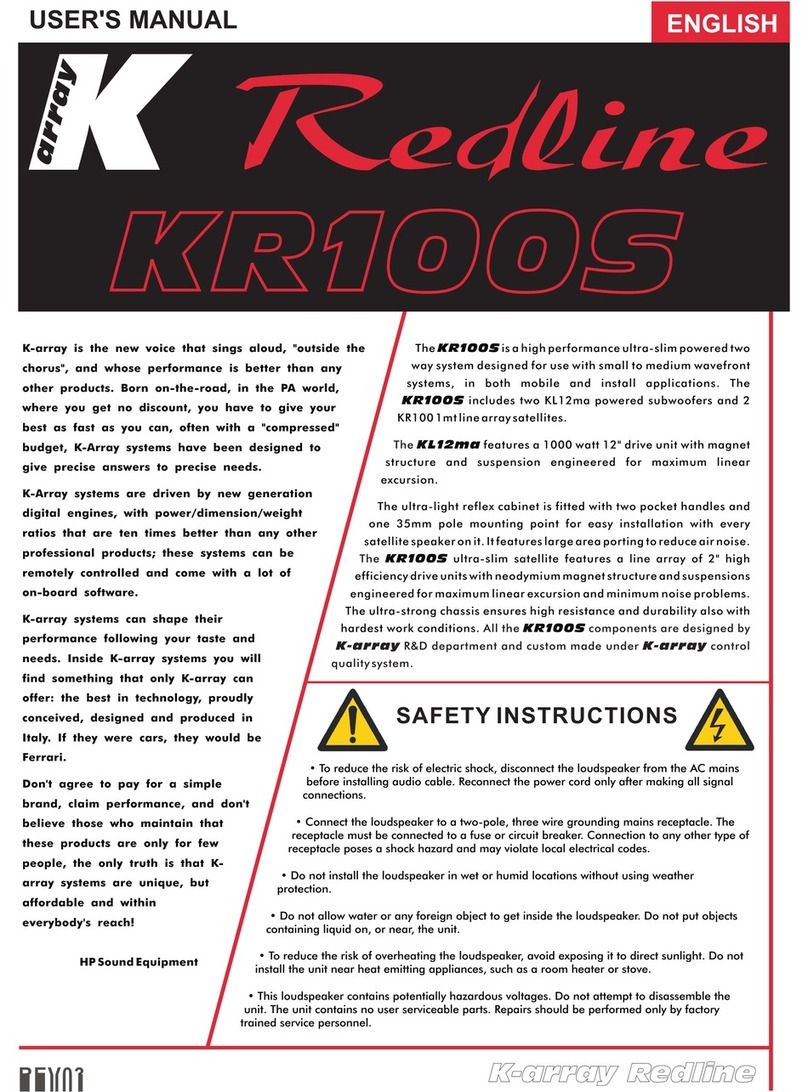
K-array
K-array Redline KR100S User manual

K-array
K-array Redline KR100S User manual
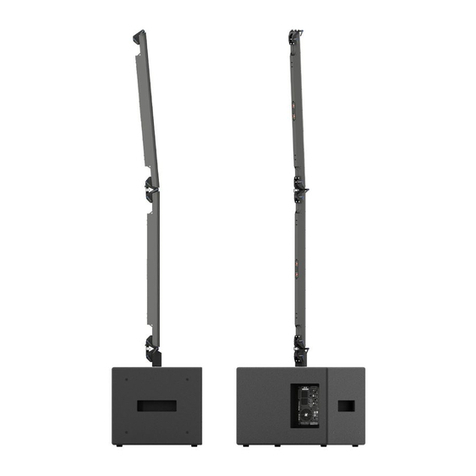
K-array
K-array Pinnacle-KR II User manual
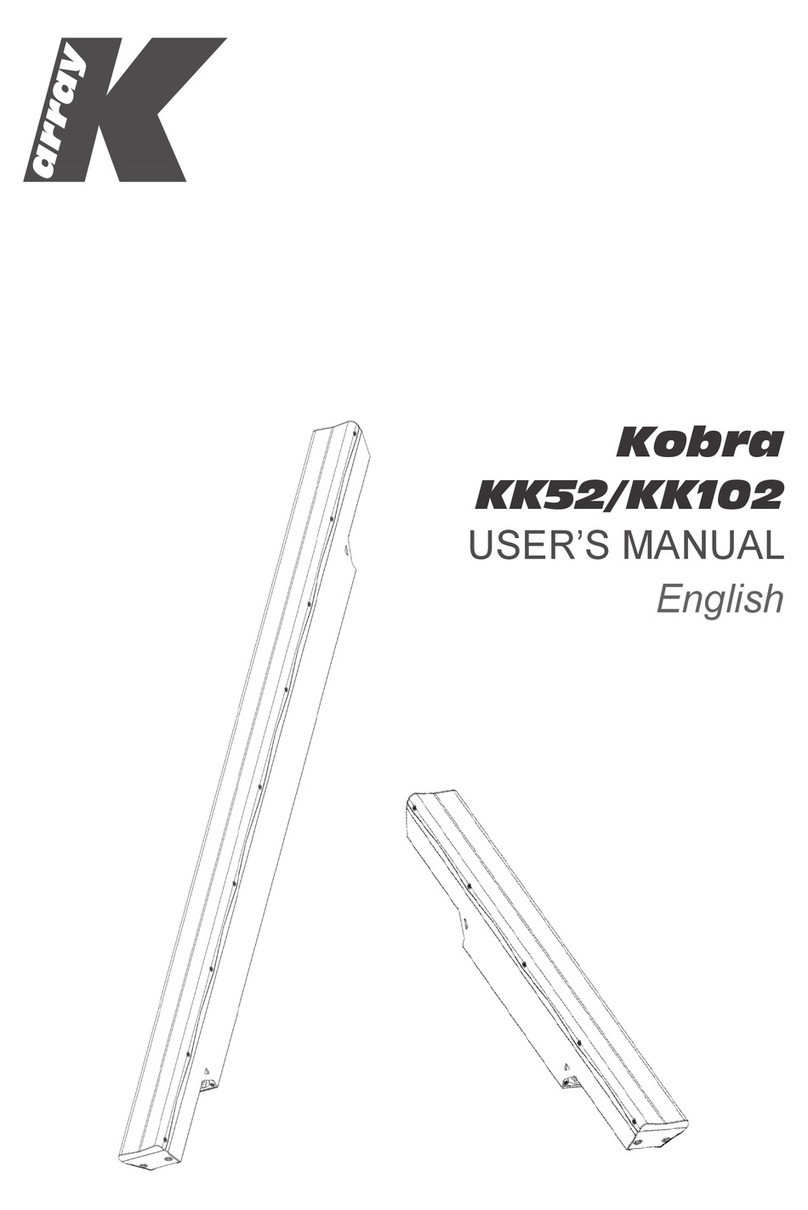
K-array
K-array Kobra KK52 User manual
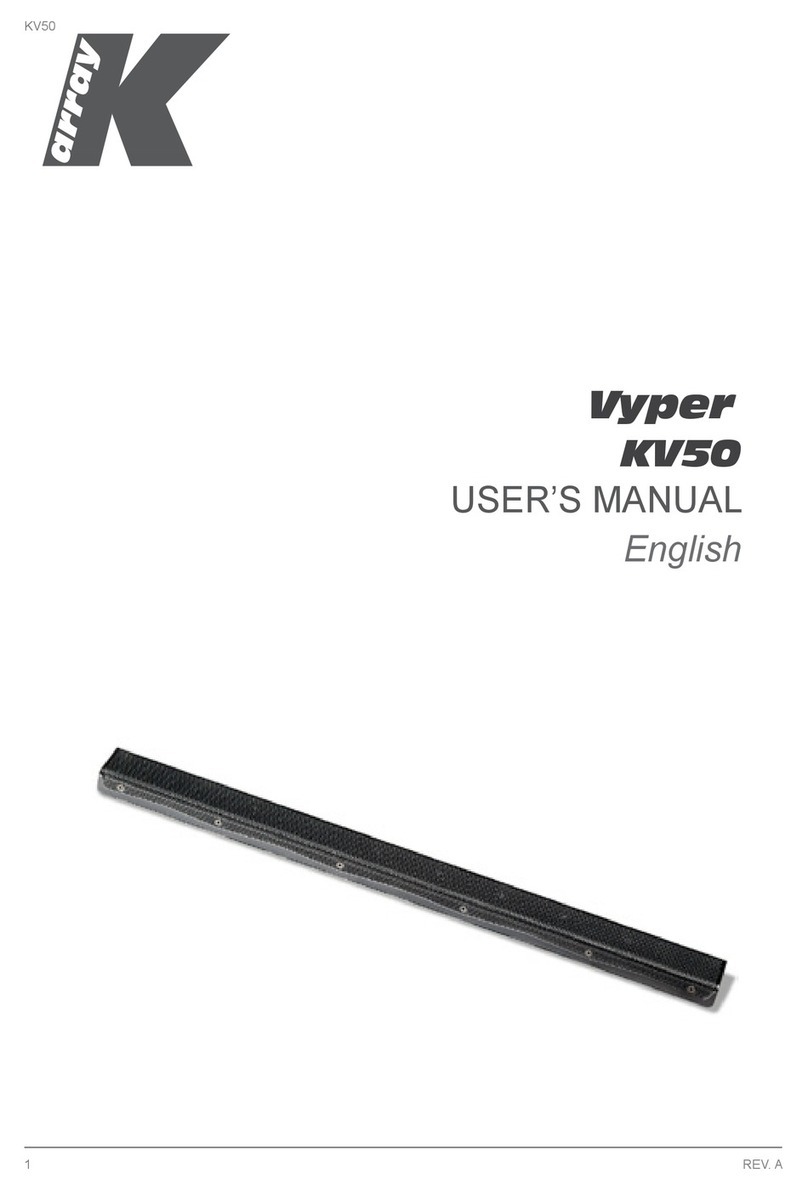
K-array
K-array Vyper KV50 User manual
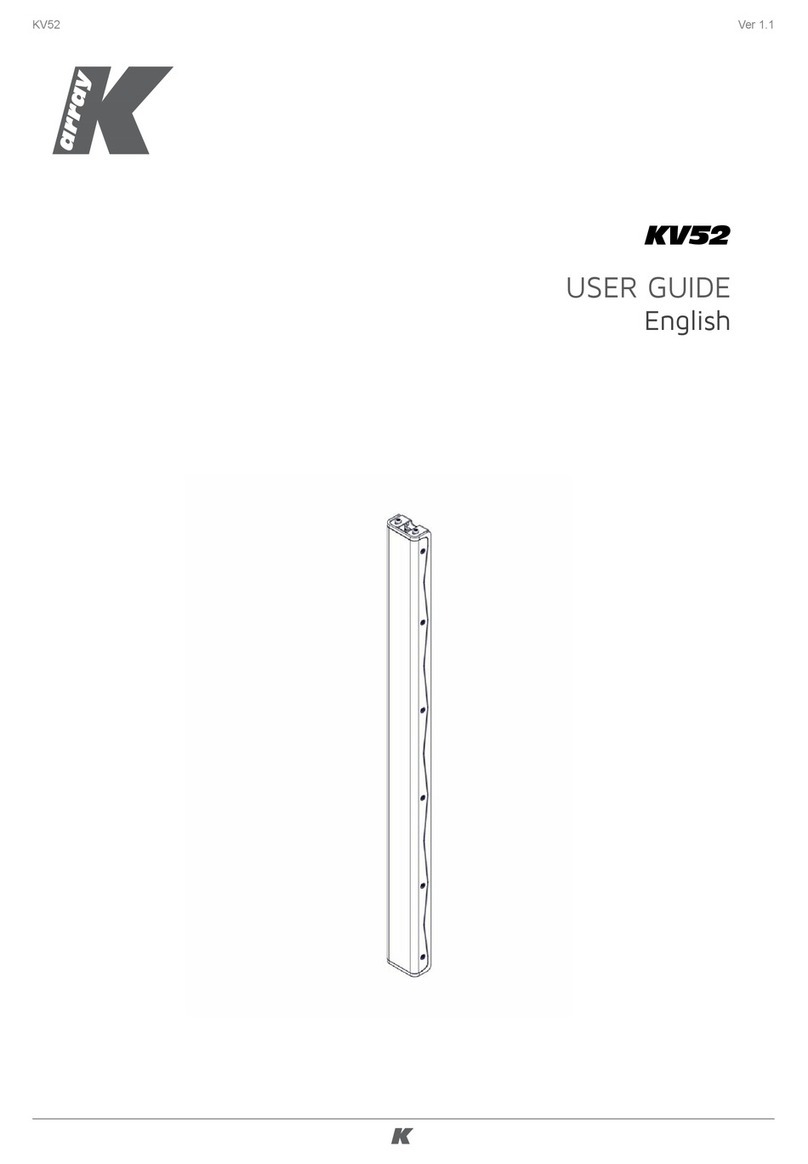
K-array
K-array Vyper KV52 User manual

K-array
K-array Kobra KK52 User manual
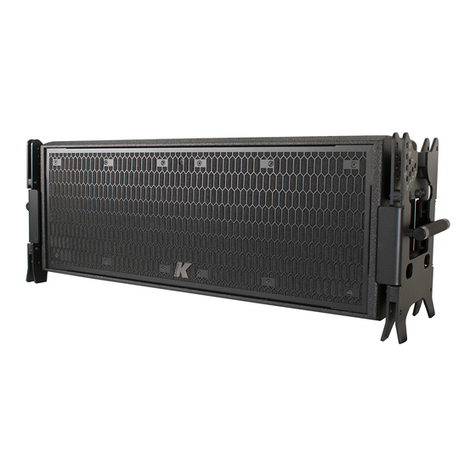
K-array
K-array Concert Series Quick start guide
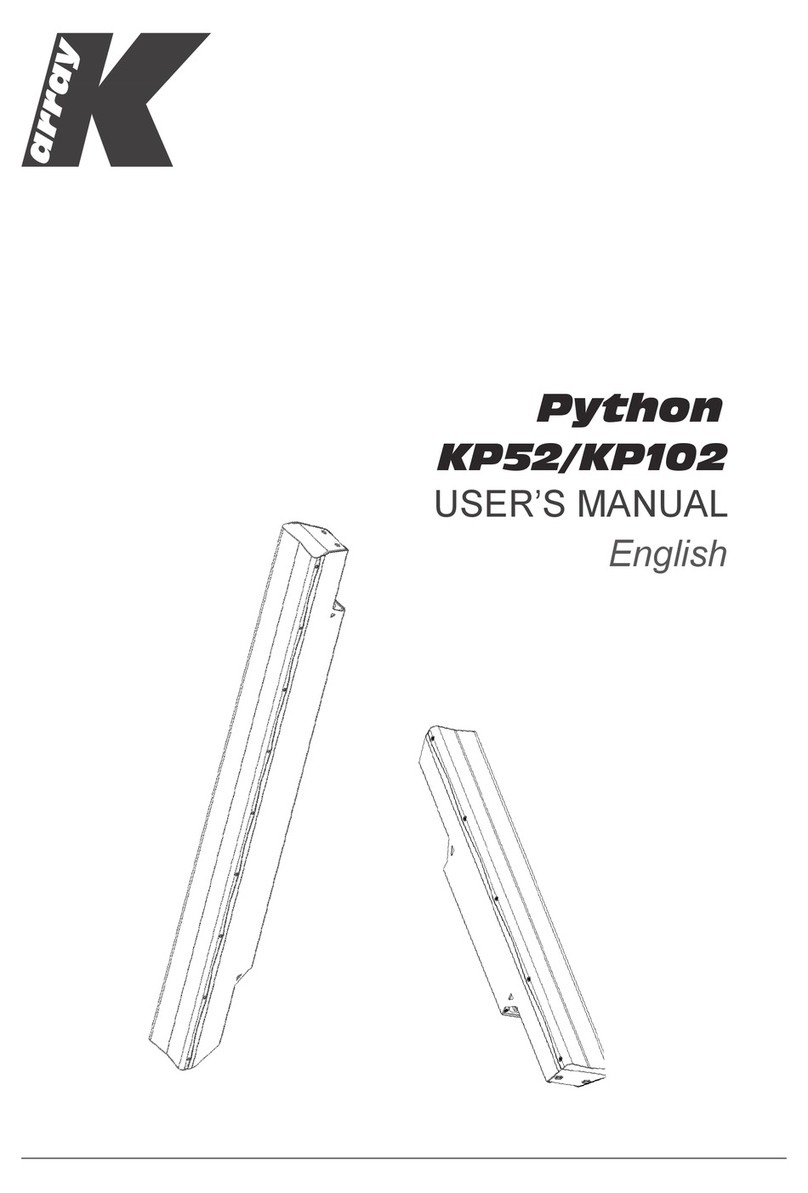
K-array
K-array Python KP52 User manual
